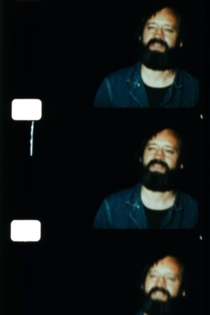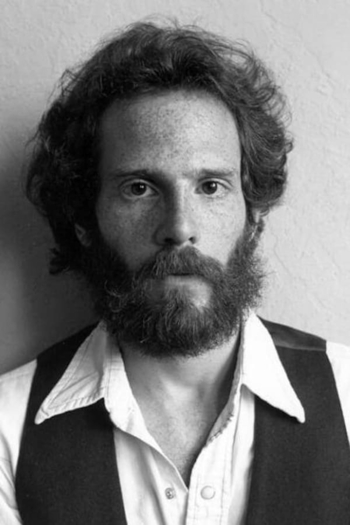
Owen Land
1944 - 2011According to film historian Mark Webber, Land made some of his first films as a teenager, and his later films, made mostly during the 1960s and 1970s, are some of the first examples of the "structural film" movement. Land's films usually involve word play, and have been described by Webber as having humor & wit that separates his films from the "boring" world of avant-garde cinema.
His work is also known to parody the experimental & "structural film" movement, as featured in his 1975 film Wide Angle Saxon. His style of filmmaking is also inspired by Bertolt Brecht, educational films, advertising, and television, and employs devices used by such in his films to destroy any sense of "reality", as exhibited in What's Wrong With this Picture 1 and Remedial Reading Comprehension.
Shortly after the release of his film On the Marriage Broker Joke as Cited by Sigmund Freud... (1977), Landow rearranged his name to Owen Land. It is an anagram of "Landow N.E." Land served as the model for Robert Heinlein's character Jubal Harshaw, unbeknownst to Heinlein.
The book Two Films By Owen Land (Lux, London) features the complete scripts of Landow/Land's films Wide Angle Saxon and On the Marriage Broker Joke as Cited by Sigmund Freud in Wit and its Relation to the Unconscious or Can the Avant-Garde Artist Be Wholed?, as well as footnotes written by Land interpreting the many references and elements of these two films and a filmography by Mark Webber. Released in May 2011, the book "Dialogues - a film by Owen Land" (Paraguay Press, Paris) features the complete script of his last film, as well as two interviews with the artist and essays written by Philippe Pirotte, Julia Strebelow and Chris Sharp.
Fluxfilm Anthology 1962-1970
Mike Parr, Owen Land
Feature-length compilation program presenting 37 out of 41 original fluxfilms produced and directed in the 1960s by Fluxus artists, including George Maciunas, Nam June Paik, Yoko Ono, Robert Watts, Paul Sharits, et al.
Fluxfilm Anthology 1962-1970
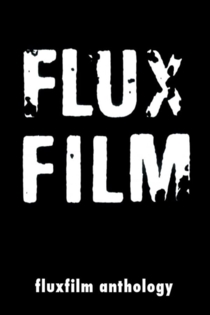
Grand Opera: An Historical Romance
James Benning
Hollis Frampton, Owen Land
Grand Opera marks a stock-taking of Benning's work and his life, presenting a personal and artistic autobiography woven together with a series of events dealing with the historical development of the number pi, Benning's travels, and homages to Michael Snow, Hollis Frampton, George Landow (Owen Land), and Yvonne Rainer.
Grand Opera: An Historical Romance

New Improved Institutional Quality: In the Environment of Liquids and Nasals a Parasitic Vowel Sometimes Develops
Owen Land
Art Gower, Gunner Piotter
A reworking of an earlier film, Institutional Quality, in which the same test was given. In the earlier film, the person taking the test was not seen, and the film viewer in effect became the test taker. The newer version concerns itself with the effects of the test on the test taker. An attempt is made to escape from the oppressive environment of the test — a test containing meaningless, contradictory, and impossible-to-follow directions by entering into the imagination. —Canyon Cinema
New Improved Institutional Quality: In the Environment of Liquids and Nasals a Parasitic Vowel Sometimes Develops

What's Wrong with This Picture? 1
Owen Land
A found, utilitarian object, the overtly moralizing educational film “How to be a Good Citizen,” is elevated to the status of ‘art’. First presented unaltered and then in Landow’s color facsimile, the film is further modified by applying an opaque matte that creates a spatial paradox. - Harvard Film Archive
What's Wrong with This Picture? 1

Fleming Faloon
Owen Land
In his first 16mm film, Landow proposes that if we accept the reality offered to us by the illusion of depth on the flat plane of the screen, we can then assign reality to anything at will. A cinematic equivalent of the illusionistic portraiture of the Flemish painters. - Harvard Film Archive
Fleming Faloon

What's Wrong with This Picture? 2
Owen Land
As Landow and his students were testing a new video camera, an elderly man began to talk to them about new technology. This impromptu conversation forms the basis for a comparison of spoken and written language. - Harvard Film Archive
What's Wrong with This Picture? 2

On the Marriage Broker Joke as Cited by Sigmund Freud in Wit and Its Relation to the Unconscious or Can the Avant-Garde Artist Be Wholed?
Owen Land
Owen Land
“Freud established that jokes were structurally akin to dreams in their use of condensation, displacement, representation by opposites, punning and ‘nonsense’. All of these strategies are much in evidence in (Land’s) marvelously duplicitous ON THE MARRIAGE BROKER JOKE… [...] so clever and original a filmmaker as to make most others – not to mention his critics – seem flat-footed by comparison. ON THE MARRIAGE BROKER JOKE harks back to Bunuel’s early work. Not only is it structured like a dream and filled with sexual imagery, but like Un Chien Andalou, it smacks of being an insider’s joke played upon the avant-garde. Where Bunuel used the insights of psychoanalysis to satirize Christianity, Land– with an almost equal perversity – reverses the process and uses Christianity to send up Freud.” – J. Hoberman, American Film
On the Marriage Broker Joke as Cited by Sigmund Freud in Wit and Its Relation to the Unconscious, or Can the Avant-Garde Artist Be Wholed?
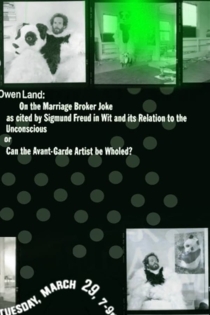
Institutional Quality
Owen Land
Meredith Monk
Constructed around a found soundtrack in which a strict female voice delivers a test of perception and comprehension, Institutional Quality’s sound and image relationship become detached as the filmmakerloses interest in his subject.
Institutional Quality

Bardo Follies
Owen Land
A shot of a Southern Belle waving to a group of tourists on a pleasure boat ride is looped, multiplied and then melted, creating psychedelic abstract images. “A paraphrasing of certain sections of the Tibetan Book of the Dead in motion picture terms.” - Harvard Film Archive
Bardo Follies

Remedial Reading Comprehension
Owen Land
Owen Land
Landow rejects the dream imagery of the historical trance film for the self-referential present, using macrobiotics, the language of advertising, and a speed-reading test on the definition of hokum. The alienated filmmaker appears, running uphill to distance himself from the lyrical cinema, but remember, "This is a film about you, not about its maker."
Remedial Reading Comprehension
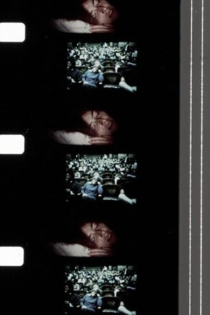
Thank You Jesus for the Eternal Present
Owen Land
A rapturous audio-visual mix that “deliberately seeks a hidden order in randomness.” The film combines the face of a woman in ecstatic, contemplative prayer with shots of an animal rights activist, and a scantily clad model advertising Russian cars at the International Auto Show, New York. - Harvard Film Archive
Thank You Jesus for the Eternal Present

The Film That Rises to the Surface of Clarified Butter
Owen Land
The ‘imperfections’ of filmmaking, normally suppressed, are at the core of a work that uses a brief loop made from a Kodak color test. “The dirtiest film ever made” is one of the earliest examples of the film material dictating the film content. - Harvard Film Archive
The Film That Rises to the Surface of Clarified Butter
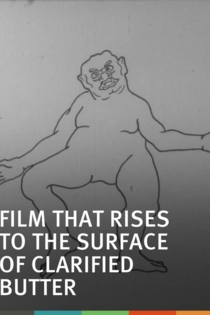
Film in Which There Appear Edge Lettering, Sprocket Holes, Dirt Particles, Etc.
Owen Land
Film in Which There Appear... is a six-minute loop of the double-printed image of a "China girl" or "Shirley card", her image off-center, making visible the sprocket holes and edge lettering on the film. According to Land, within the loop, "no development in the dramatic or musical sense" occurs. Fred Camper described Film in Which There Appear... as "a kind of Duchampian found object, a [...] film that focuses attention on the medium and the viewer."
Film in Which There Appear Edge Lettering, Sprocket Holes, Dirt Particles, Etc.
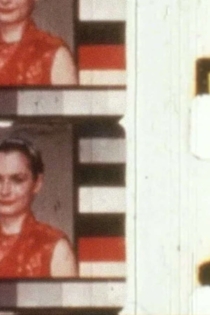
A Film of Their 1973 Spring Tour Commissioned by Christian World Liberation Front of Berkeley, California
Owen Land
A radical Christian group's lecture tour of US colleges was filmed in the cinema verité tradition, with hand held camera, sync and wild sound. To avoid making a conventional documentary, the filmmaker created a dynamic collage by stroboscopically editing together pairs of scenes using a rapid rhythm of three-frame units.
A Film of Their 1973 Spring Tour Commissioned by Christian World Liberation Front of Berkeley, California
